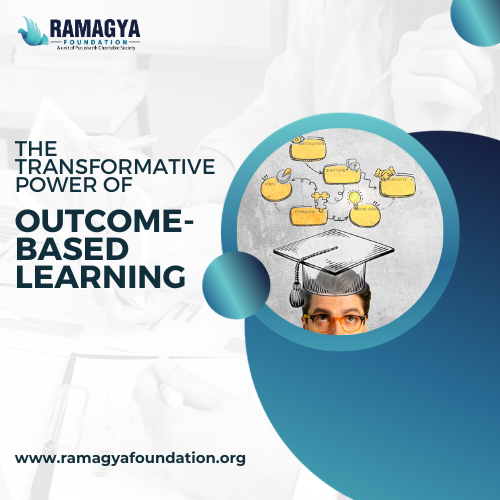
Engage in a conversation with a recent graduate, and they’ll likely confess to the unreadiness they face upon stepping into the job market, despite their impressive academic achievements. Employers, too, echo this sentiment, lamenting the absence of critical thinking, the deficiency in communication skills, and the frailty of interpersonal abilities among graduates.
The advent of Outcome-Based Education (OBE) is poised to reshape the educational landscape.
Outcome-Based Education (OBE) is educational approach that defines specific learning outcomes or competencies that learners are expected to achieve by the end of a course or programme. Instead of solely emphasizing course content or instructional methods, OBE strongly emphasizes the skills, knowledge, and abilities that learners should possess upon completing their education.
The Heart of Outcome-Based Learning
Imagine a classroom where the goal isn’t just to pass an exam but to emerge with tangible skills that make you capable and confident. That’s the heart of Outcome-Based Education. Instead of focusing solely on course content, OBE revolves around clearly defining what learners should be able to do, understand, or demonstrate when they complete a course. It’s about the “how” rather than just the “what.”
Bridging the Gap between Education and Employability
Outcome-Based Learning bridges the gap between education and employability, especially for underprivileged children. It’s not just about acquiring information; it’s about equipping students with practical skills that empower them to navigate the challenges of the real world. In a country like India, where educational disparities are glaring, OBE has the potential to level the playing field.
Key Components of Outcome-Based Education
- Defining Clear Learning Outcomes: OBE shifts the focus from passive learning to active participation. Students understand what they are expected to achieve by the end of a course, making their learning journey more purposeful.
- Fostering Practical Skills: OBE focuses on skills that matter in real life, such as problem-solving, critical thinking, and effective communication. These skills are essential for success, regardless of a student’s background.
- Personalized Learning: Every student is unique, and OBE recognizes this. It allows students to progress at their own pace, ensuring they grasp concepts before moving on.
- Continuous Assessment: Regular assessment keeps students engaged and motivated. It also helps educators identify areas where students might need additional support.
- Application-Oriented Approach: OBE encourages students to apply their learning in practical scenarios. Engaging in practical activities like this helps individuals develop a more profound comprehension and equips them to tackle real-world challenges that go beyond what’s covered in textbooks.
Outcome-Based Education is a beacon of hope for underprivileged children. It empowers them with skills that transcend socioeconomic barriers. When students emerge from an OBE curriculum, they are not just armed with certificates but with the competence to navigate life’s challenges. By embracing Outcome-Based Learning, we can bridge the gap between education and employability, significantly impacting the lives of the underprivileged and shaping a brighter future for India.
- According to a recent study, only 47% of Indian graduates are considered employable.
- Dr APJ Abdul Kalam emphasized, “Educationists should build the capacities of the spirit of inquiry, creativity, entrepreneurial and moral leadership among students.”
- UNICEF reports that around 8 million children in India are out of school.
The future of education lies in its transformative potential, in its ability to empower learners with skills that extend far beyond the classroom. As we unlock the power of Outcome-Based Education, Ramagya Foundation aims to unlock the potential of every child, irrespective of their background, allowing them to dream big and achieve even bigger.
Read our Article: Can Education Trends Reshape India’s Learning Landscape?